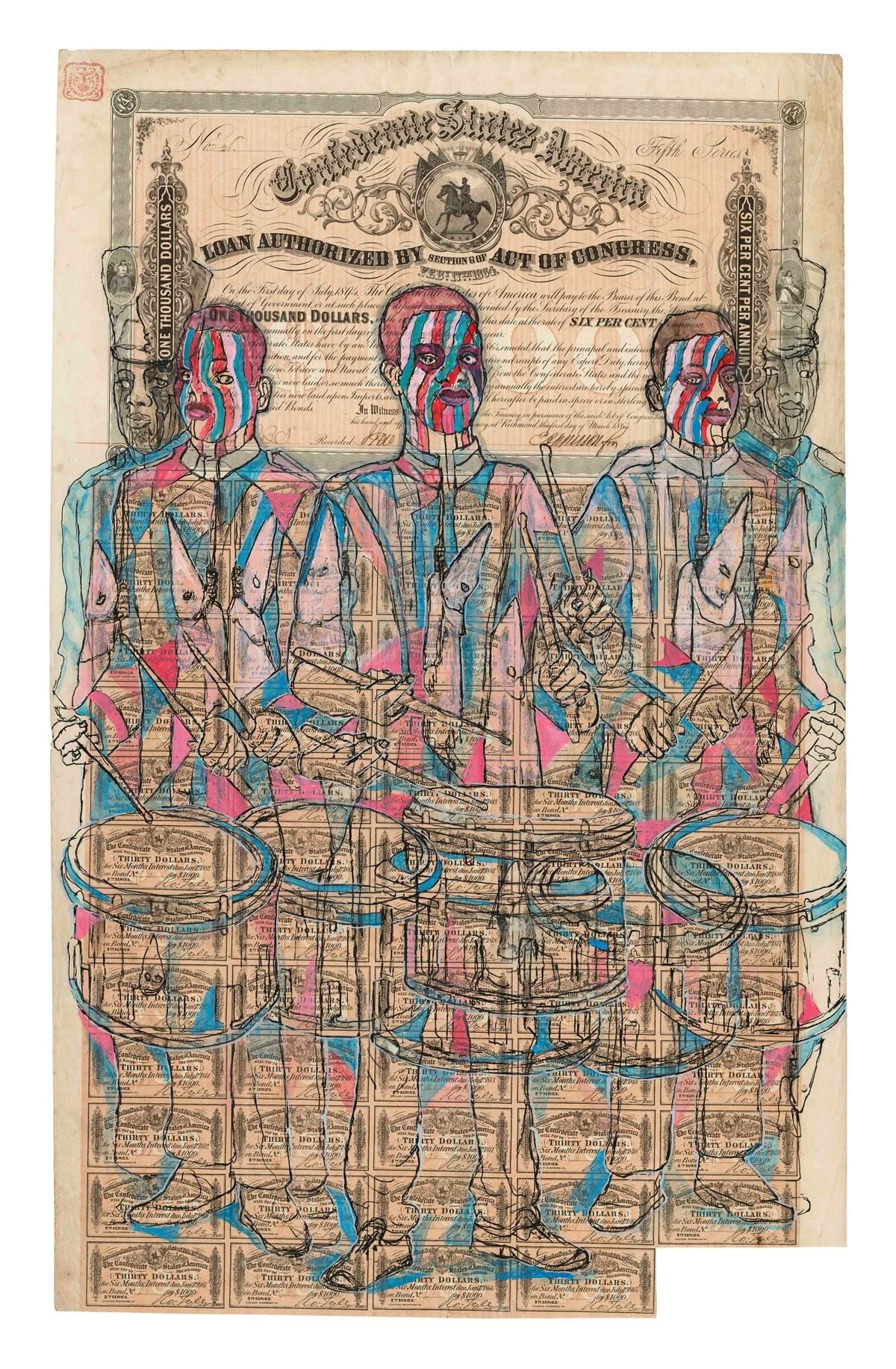Nicholas Hlobo
"Ulwamkelo"
Lehmann Maupin
New York, 536 West 22nd Street
For Nicholas Hlobo’s second exhibition with the gallery, the South African artist will show recent mixed media paintings and sculptures that merge his signature materials of ribbon, leather, wood, and rubber employed with conceptual specificity to address complex issues of identity. The title, Ulwamkelo, translates to The Welcoming, the artist’s acknowledgement that many of these works were recently recovered and returned to him after his studio in Johannesburg was robbed in 2017. Celebrating this serendipitous outcome, the gallery will host a special opening reception on Wednesday, July 18, from 6 to 8 PM, with an artist talk and performance throughout.
Often, Hlobo leverages the associations weighted in specific materials—ribbons representing the feminine, leather the masculine—merging the two in his paintings like Babelana ngentloko (2017) to pull apart this binary assimilation and present a more holistic and multifaceted approach. The biomorphic entities represented, often described as sperm-like, seem to morph into more female reproductive organs, or alternatively could just as easily be floral, or oceanic, making a point about the reality of fluidity in a construct like gender.
NICHOLAS HLOBO Dangazela, 2017 ribbon and leather on canvas 47.24 x 70.87 inches 120 x 180 cm LM26039
The elegant arcs and arabesques of the ribbon stitching, and more free-flowing compositions likePhantsi Komngcunube (2017), where a density of black leather and white ribbons spill from the canvas onto the floor, are mimicked in sculptures of molded bronze, copper, and brass instruments. In these, bugles, trumpets, and saxophones appear to levitate amid the elongated stems of their mouthpieces, which have been molded in many feet of curling, sculpted metal. Rendered mute by the intervention in their design, the works nonetheless vibrate with the qualities one would expect from a jazz solo, or a duet of lovers. Indeed, Hlobo explicitly relates the phallic qualities of the instruments, and the act of playing them, to oral sex, exaggerating these physical attributes of the instruments to an absurd scale. The title shared by this series, Mphephethe uthe cwaka…, translates from Xhosa, Hlobo’s native language used to title all of his works, as “blowing them in silence,” a further titillation, until one reflects on the functions of violence and silence associated with masculinity and eroticism in cultures shaped by a colonial past.
Hlobo allows himself to work instinctively and draws his forms directly onto canvas from his subconscious. In this manner, his work functions as a catharsis or exorcism, purging from himself the indoctrination of cultural dichotomies that set boundaries of either/or, where Hlobo wishes to portray the multitude.
On view through Agust 24, 2018







